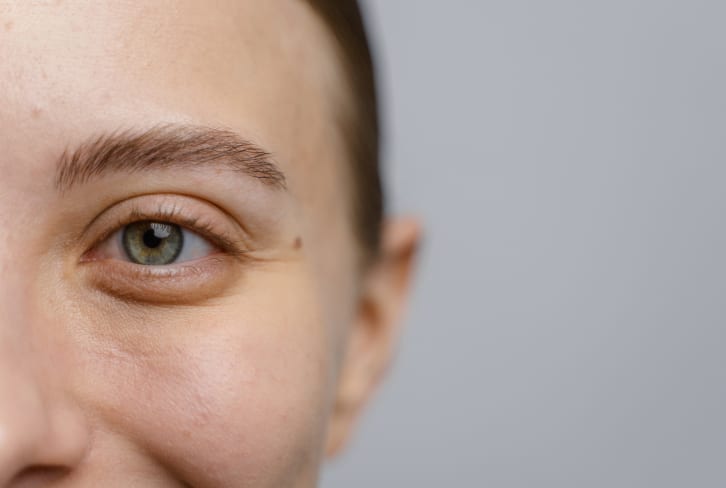Advertisement
How To Apply Retinol Like A Dermatologist + What *Not* To Do


So, you want to start using retinol, but maybe you're a little bit scared. This is totally common—retinol is an intimidating product, especially when it comes to hefty, prescription-strength formulas. Not to mention, the application comes with a learning curve!
But retinol is also a powerful and research-backed ingredient that has a long list of benefits—from clearing stubborn acne to easing fine lines and wrinkles to even brightening a once dull complexion. You just have to use it correctly—here, board-certified dermatologist Amanda Doyle, M.D., FAAD, explains how to do just that:
Apply your retinol to a clean canvas.
"Make sure you apply to a clean canvas," Doyle says. "I always apply retinols and retinoids at night before bed, and I wash my face first with a gentle cleanser before applying."
If certain areas of your face are particularly prone to irritation, try applying a moisturizer to those areas only before going in with your retinol. This "sandwich method" will help minimize the risk of irritation in more fragile areas, like the under-eyes, eyelids, lips, etc.
Make sure to always apply a moisturizer after your retinol to lock in hydration and strengthen your skin barrier, too.
Start low & slow.
If you launch with a super-strong retinoid and use it every night, you'll probably get a "retinoid reaction," which may consist of redness, excessive dryness, irritation, etc. "If you've never used a retinol or retinoid, make sure to start no more than two or three times a week at night," Doyle says. If you have sensitive skin, don't use retinol more than twice a week. Be sure to leave a few days in between using retinol, too (i.e., start skin cycling).
"The skin requires an adjustment period before you can more consistently use it," Doyle says. Starting low and slow (in terms of concentration and cadence) will help minimize the risk of those more intense side effects—though some redness and dryness are to be expected with any new retinoid.
Do not mix your retinol with other actives.
"Avoid using retinols at the same time as other acid-based or retinol-based products," Doyle says. At the risk of sounding like a broken record: Do not cocktail your actives.
Even if you're not deliberately using a strong AHA serum or retinol product, be sure to check the ingredients on all of your skin care. Even if it's not clearly stated on the front of the package, that "glow-inducing" or "skin-smoothing" night cream may have a few active ingredients that may react poorly to your retinol treatment.
The takeaway.
If you're intimidated by retinol but want to start reaping the benefits, just remember to ease into it. Apply your retinol product to clean, dry skin, and never mix it with other acid- or retinol-based products. Start using it once or twice a week to allow your skin to adjust before bumping up the cadence, if you choose. And if you're ready to invest, here are our top clean and effective retinol recommendations to start your search on the right foot.
Watch Next
Enjoy some of our favorite clips from classes
Enjoy some of our favorite clips from classes
What Is Meditation?
Mindfulness/Spirituality | Light Watkins
Box Breathing
Mindfulness/Spirituality | Gwen Dittmar
What Breathwork Can Address
Mindfulness/Spirituality | Gwen Dittmar
The 8 Limbs of Yoga - What is Asana?
Yoga | Caley Alyssa
Two Standing Postures to Open Up Tight Hips
Yoga | Caley Alyssa
How Plants Can Optimize Athletic Performance
Nutrition | Rich Roll
What to Eat Before a Workout
Nutrition | Rich Roll
How Ayurveda Helps Us Navigate Modern Life
Nutrition | Sahara Rose
Messages About Love & Relationships
Love & Relationships | Esther Perel
Love Languages
Love & Relationships | Esther Perel


















